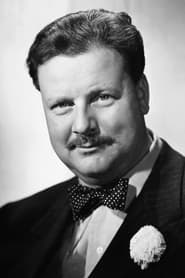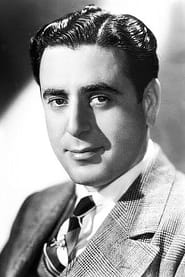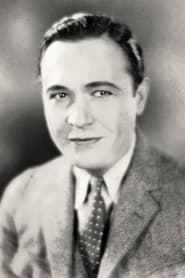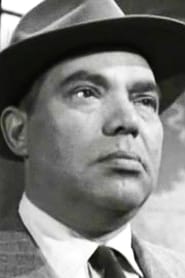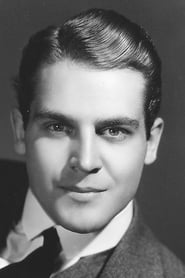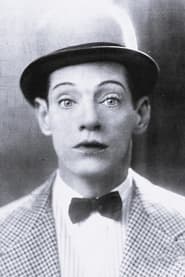Cast
View AllPat O’Brien
as Dan Hammer
Anne Jeffreys
as Maxine Manning
Walter Slezak
as Eric Molinar
Percy Kilbride
as Pop
Jerome Cowan
as Walter Gredson
George Givot
as Major Rues
Jason Robards Sr.
as Mr. Domingues
Marc Krah
as Charles Hasso
Robert Andersen
as Co-Pilot (uncredited)
Ernest Anderson
as Wong - Houseboy (uncredited)
Bobby Barber
as Customs Inspector (uncredited)
Bonnie Blair
as Airport Official (uncredited)
Eddie Borden
as Panhandler (uncredited)
Tom Coleman
as Man in Hallway (uncredited)
Italia DeNubila
as Dancer (uncredited)
Crew
Director
- Ted Tetzlaff
Writer
- Martin Rackin
Producer
- Nat Holt
Reviews
John Chard
His name is Hammer and they call him Hammer, and he's just as subtle!
Riffraff (AKA: erm, Riff-Raff) is directed by Ted Tetzlaff and written by Martin Rackin. It stars Pat O'Brien, Anne Jeffreys, Walter Slezak and Percy Kilbride. Music is by Roy Webb and cinematography by George Diskant.
Something of a little cracker is this one, a pic for those with a discernible palate of Private Investigator based film noir. Don't be misled into believing others when they write that it's minor noir, or borderline of such, it quite simply is a noir pic from what was a stellar year for that film making style.
Story is based in Panama and finds P.I. Dan Hammer (O'Brien) involved in the search for a map that shows priceless oil concessions. Sure enough there's others who desperately want the map, so in comes murders, beatings and a sultry babe.
Pic opens with the shot of a reptile at nighttime, sitting on a rock in the pouring rain, it probably would have been better to use a snake in the shot, but it certainly is a most appealing and appropriate film opening. From there the piece is a veritable feast of super photography and punchy dialogue. OK, so the plot story is standard fare, but the makers never let it drag things down, there's always a quip or a punch thrown to keep things perky.
Tetzlaff was himself a fine cinematographer (see the previous year's Notorious), and here armed with Diskant (They Live By Night/On Dangerous Ground/The Narrow Margin) in his corner the director makes hay. The plot set-up sequences in an aeroplane are moody visual supreme, and often when a scene calls for it - such as when Hammer is getting tortured in his office by Sleazak and his thugs - the noir style comes to the fore. There's wooden slats everywhere in this, wonderful!
Initially one can be forgiven for being sceptical at a portly 48 year old O'Brien playing a tough P.I., but he pulls it off, sharp of tongue and he throws a good punch does Pat. Jeffreys (Dillinger) slinks in for some initial sultry suspicion, and does well, even getting involved in the key fight scene, Kilbride is wonderfully wry as Hammer's unofficial aide, and Sleazak does what he does best, Weasle time!
Capping it off is the MacGuffin map, whose whereabouts at reveal is cheeky and something Hitch would have been proud of. Riffraff is a winner and well worth seeking out. 7/10
Nov 12, 2017
Thematic Analysis
As a dramatic work, Riff-Raff examines complex human relationships and emotional struggles against the backdrop of a period setting that reflects societal issues of its time. The character development particularly stands out, offering viewers a chance to reflect on their own life journeys.
Director Ted Tetzlaff brings their distinctive visual style to this film, continuing their exploration of themes seen in their previous works while adding new elements. Their approach to character development and emotional depth creates a viewing experience that rewards close attention.
Released in 1947, the film exists within a cultural context that now offers viewers historical perspective on the social issues of that era. Its reception demonstrates the diverse reactions to its artistic choices and its place in cinema history.
Did You Know?
- The production of Riff-Raff took approximately 7 months from pre-production to final cut.
- The final cut of the film runs for 80 minutes, though the director's initial assembly was reportedly 122 minutes long.
- Several scenes were filmed in multiple locations to capture the perfect setting.
- Some visual effects sequences took up to 12 months to complete.
- The director insisted on using practical effects whenever possible, reserving CGI for only the most necessary scenes.
Historical Context
- In 1947, when this film was released:
- Television was becoming a dominant form of home entertainment.
- Rock and roll music was revolutionizing popular culture.
- The film industry was dominated by major studios, with independent cinema still in its early development.
How This Film Stands Out
While Riff-Raff shares thematic elements with other films in its genre, it distinguishes itself through its unique approach to storytelling, visual style, and character development.
Unlike Dancer in the Dark, which takes a more conventional approach to its subject matter, Riff-Raff offers a fresh perspective through its innovative visual language and narrative structure.
While films like The Big Black Sow and Sand Trap explore similar territory, Riff-Raff stands apart through its distinctive directorial vision and pacing.
This film's unique contribution to cinema lies in its thoughtful balance of entertainment value and thematic depth, making it a valuable addition to its genre.
Details
- Release Date: June 28, 1947
- Runtime: 1h 20m





